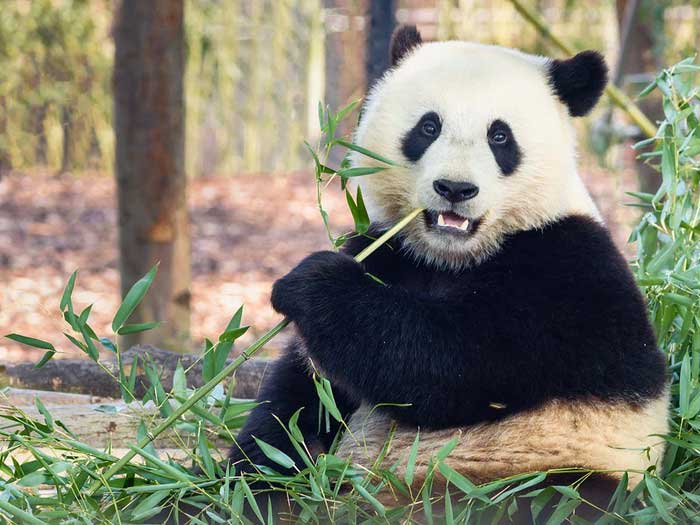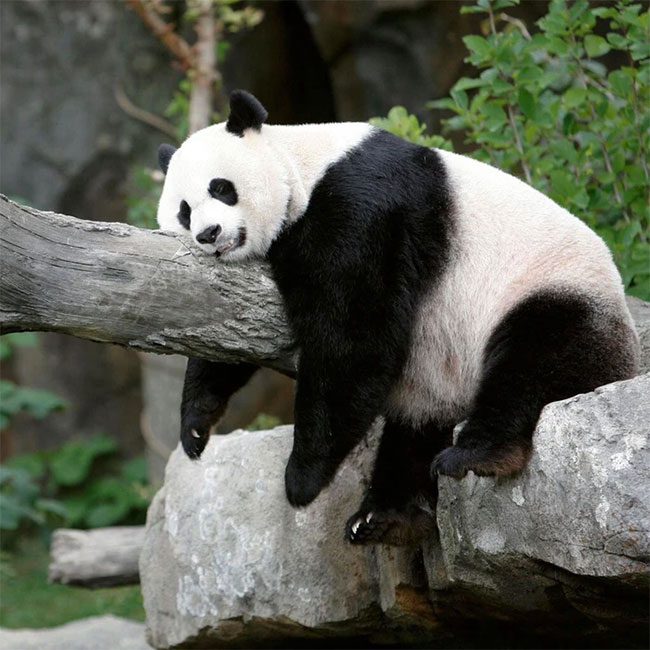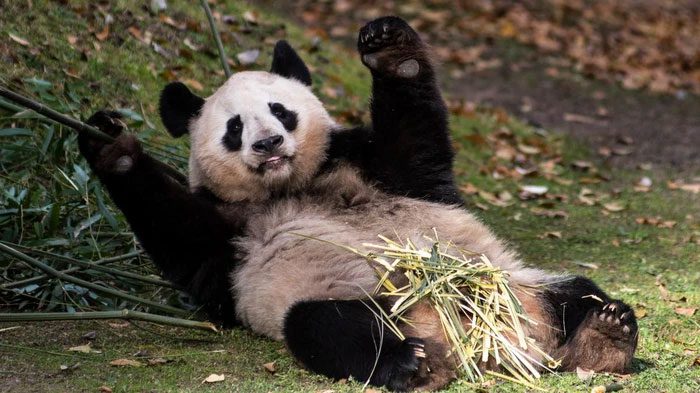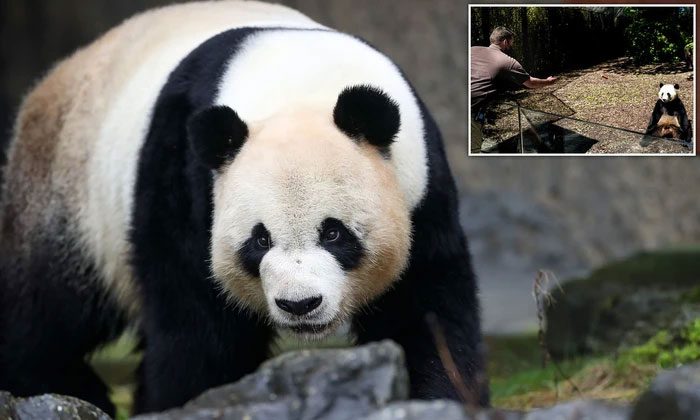The giant panda is now considered a national treasure in China, with its chubby body, round eyes, and innocent expression, it has captured the hearts of people around the world.
The giant panda spends its leisure time munching on bamboo, appearing extremely lazy yet radiating a unique charm. However, historically, why did ancient people not keep them as pets? What is the real reason behind this?
Challenges in Raising Giant Pandas
The giant panda is a national symbol of China and one of the most recognized animals globally, but caring for this adorable creature is exceedingly difficult.

The giant panda eats bamboo during its leisure time, looking very lazy.
In the wild, giant pandas are only found in three provinces: Sichuan, Shaanxi, and Gansu in western China. However, with urbanization and increased human activity, their habitats are gradually shrinking, making survival conditions increasingly difficult.
Giant pandas have a very specialized diet; they primarily eat bamboo and shoots, consuming about 30 kg daily. In zoos, to care for giant pandas, bamboo must be cultivated, but if not planted correctly, this food can not only hinder the growth and reproduction of pandas but also lead to digestive issues and various chronic diseases.

They primarily eat bamboo and shoots, consuming approximately 30 kg each day.
Raising giant pandas is also a significant challenge. Wild pandas rarely reproduce and face many difficulties when breeding in captivity. Since giant pandas are solitary animals, it is challenging to bring them together; their mating season is short, lasting only a few days each year, and missing this window means they must wait an entire year.
Moreover, the reproductive rate of giant pandas is not very strong; female pandas typically give birth to only one litter each year, and the survival rate of the cubs is not high, as they are quite clumsy at caring for their young. Therefore, in captivity, most of the time, the cubs are specially cared for by humans.

The reproductive ability of giant pandas is not strong.
Caring for giant pandas also requires high expertise and experience. Breeders need to understand the preferences, dietary needs, health indicators, and other aspects of giant pandas. Additionally, giant pandas are very lazy animals, which also affects their health and reproductive capabilities. Therefore, caregivers need to design engaging activities to stimulate the pandas and enhance their physical activity.
Breeding giant pandas can be described as an extremely complex and challenging task, requiring specialized knowledge, experience, and patience. Although giant pandas can become zoo residents, they do not easily reproduce even in natural environments.
By keeping giant pandas in zoos, we can ensure they have ample food and health care while also conducting research and conservation efforts to help them survive and reproduce in the wild.

Breeding pandas is a highly complex job.
Weak Vitality
Giant pandas are large animals, but their vitality is very weak, and their resistance is not strong enough. This condition has severely affected their survival and reproduction.
The dietary habits of giant pandas do not favor maintaining their vitality. Giant pandas primarily eat bamboo, but bamboo is high in fiber and has poor digestibility, which can easily cause pandas to suffer from indigestion, vomiting, or diarrhea.
Additionally, with the disappearance of bamboo forests, it is becoming increasingly difficult for giant pandas to find enough food. Simultaneously, bamboo and shoots are nutritionally poor foods, which can lead to a high risk of malnutrition in giant pandas.

The vitality of pandas is weak, and their resistance is not strong enough.
The living environment of giant pandas can also weaken their vitality. Human interventions and destructions have caused giant pandas to lose their natural ecological habitats, while also being affected by noise pollution, light pollution, and air pollution to varying degrees. Furthermore, pathogens in their living environment are also a significant cause of the low vitality of giant pandas.
It has been discovered that in panda reserves, giant pandas and other animals are threatened by numerous parasites, with an infection rate in their bodies reaching up to 80%. The invasion of these pathogens reduces the immune capacity of giant pandas, thus affecting their vitality and survival capabilities.
The health care of giant pandas is also a factor affecting their vitality. Giant pandas are an endangered species that require human protection and research. However, due to the short history of panda conservation in human history, there is a lack of adequate research and knowledge regarding their medical care.
Moreover, the size and physical characteristics of giant pandas also complicate the quick detection of diseases. This is also an important reason why giant pandas have such weak vitality.

Giant pandas are an endangered species that needs human protection and research.
Giant Pandas can be Quite Temperamental
Despite their cute and harmless appearance, giant pandas actually have a very fiery temperament.
Giant pandas have broad heads with large, round black noses, giving viewers a sense of joy and tranquility. However, these outward appearances inadvertently conceal the pandas’ irritability. Giant pandas are very difficult to tame and tend to become angry when scared or threatened.
In the wild, giant pandas live in nature reserves that are relatively quiet and isolated from humans, where they can freely control their emotions. In captivity, pandas do not have enough freedom and often feel bored and anxious, thus directing their frustration towards those nearby.

Giant pandas are very difficult to tame and tend to get angry when scared or threatened.
In captivity, giant pandas are often more prone to autism than other animals. They easily become anxious and stressed when disturbed and exhibit irritability because they feel unsafe and unwelcome.
It is noteworthy that for a long time, humans have made significant efforts to protect the giant panda. However, due to the limited population of giant pandas in the wild, most are kept in parks for protection, leading to environments unsuitable for them. This environment not only makes giant pandas easily irritable but also impacts their health.
Although giant pandas have long been loved for their adorable and mysterious image, there are no historical records of them being domesticated as pets by ancient people. This may be due to their dietary choices, growth conditions, and natural habits, making them more suitable to live in the wild rather than being kept in cages as human playthings.


















































